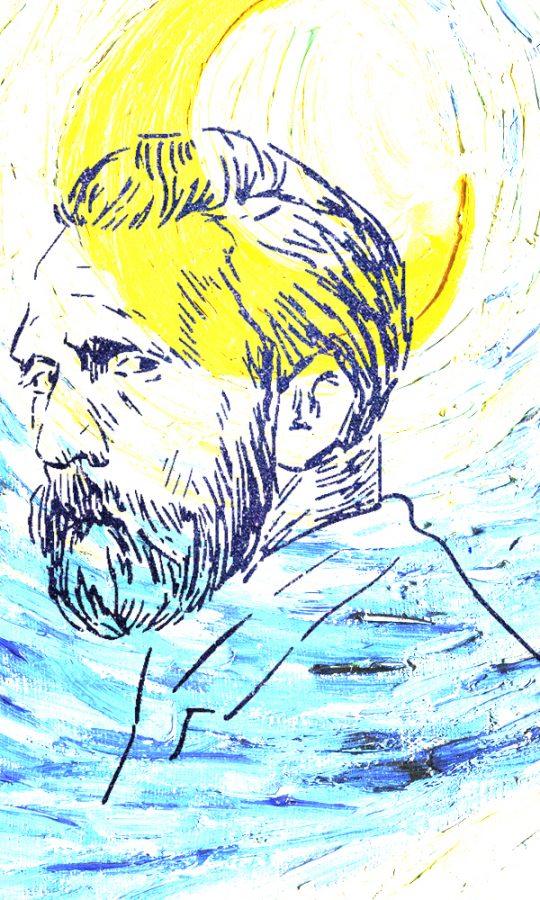Vincent Van Gogh is More Stellar Than His Starry Night
We die leaving monuments of our own making.

You will one day be remembered by three significant qualities: your good heart — all the kind gestures of inspiration and sweet generosity minding the welfare of people before you; your cruelness, perhaps –– the wrongs you commited, the failures you did not intend for, any infamies that put you in hot water; and, of course, how you died. The reverie of you radiates brighter than any stars’ sparkle, but an obloquy will not shun disgrace, as death makes no excuse for you being condemned and associated with a bad name — No one can defend your honor firsthand but you.
We remember Vincent Van Gogh for his numerous post-impressionist works, contributing “Starry Night” as his magnum opus. “Starry Night” not only played as an important example of said art movement some years after his time, and today is still viewed for clout and aesthetics in modern pop culture. Designers and those in the fashion industry draw inspiration from Van Gogh’s work — the Vans x Van Gogh Collection for instance, which launched in August 2018. For reasons numerous enough to applaud and give honor to Van Gogh for his striking contribution in contemporary art, there is plenty more to discuss concerning this iconic Dutch artist.
Vincent Van Gogh was prominently known for being a madman. For years, it had been reported that he suffered episodes of psychosis that pushed him to inflict harm upon himself and others. At one point, skeptics were convinced Van Gogh had a habit of eating yellow paint. In a romanticized version, they reckoned he did this to brighten up his insides to feel happier. In reality, Van Gogh consumed turpentine and tried to poison himself. In one of his more successful attempts to harm himself, on the night before Christmas Eve, when he ended a quarrel with another artist by taking a razor to his own ear. The damage is depicted in his work “Self-Portrait with Bandaged Ear”. His own death is a mystery, in fact, and many people have strewn together some of their own theories: Was he mad enough to fire a gun to his own stomach? Or was it the act of another perpetrator?
Van Gogh, despite being under the impression of insanity, was not properly diagnosed, as times were not as they are now. There is strong evidence by clinical physicians who looked into his past, that he suffered with depression and high and low mood swings, often recognized as bipolar disorder. The first vivid oil-painting film produced and dedicated to Van Gogh in 2017, “Loving Vincent”, was made by two Polish film directors, Dorota Kobiela and spouse Hugh Welchman. In the film, Van Gogh, upon learning the truth about his brother’s financial plight (as an art dealer in Paris failing to further support his brother’s dream as an artist), tried to commit suicide by firing a bullet into his stomach. His emotions drove him to do things that resulted in dreadful endings. Van Gogh only sold one painting during his life as a starving artist, and his brother was the only one who truly appreciated him and his work of art. Ultimately, his brother is his patron, not only as the one who lent him money for his passion, but also as his only customer who found value in his craft; Vincent was astounded and mesmerized to know his brother had given up a great sum for him to continue his art.
The following year, Van Gogh’s journey as an artist was depicted in the 2018 film biographical drama film “At Eternity’s Gate” by Julian Schnabel, with Willem Dafoe portraying Van Gogh. Throughout the film, Van Gogh’s life was picturesquely narrated in a rigorous series that highlights his battle against his personal demons. In this film, Van Gogh specifically says that he believes God made him a painter for the people who are not born yet. Van Gogh did succeed on his mission of creating an artistic revolution of pure and authentic works. He kept an open mind and appreciated color and light observed beyond what is seen as ordinary. This had consequences however, and he spent the last years of his life ridiculed, mocked, and berated for behaving differently. Little did they know, these quirks were his strengths that constituted his brilliance and artistic splendor recognized still to this today.
The chaos that exists in the mind can be the most detrimental to the human experience, if not first touched by a vision to create something with it. Van Gogh’s life, followed by an unfortunate and mysterious death, has created a commiserating impact on millions of lives. This ripple effect has inspired many to create based on what is within their delicate or maddening imaginations, as many may be at war with their own mental health, to be remembered foremost for their passion and good heart.
Frequently, during the lowest of points, we see that humanity creates their best pieces of work. Van Gogh’s legacy is a reminder for more compassion to be shown to those who feel less sympathetic to individuality. Recognize those who are in dire need of the courage to speak out, to ask for help, and to breathe without the ever-present baggage weighing them down from living a colorful, bright yellow life. To quote a line from “Loving Vincent”: “Live longer. You’ll see. Life can even bring down the strong.”
Vincent Van Gogh’s 167th birthday will be celebrated this upcoming March 30, in loving memory.






